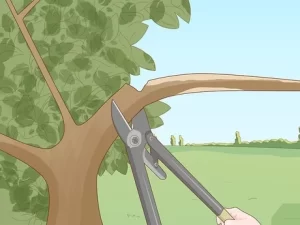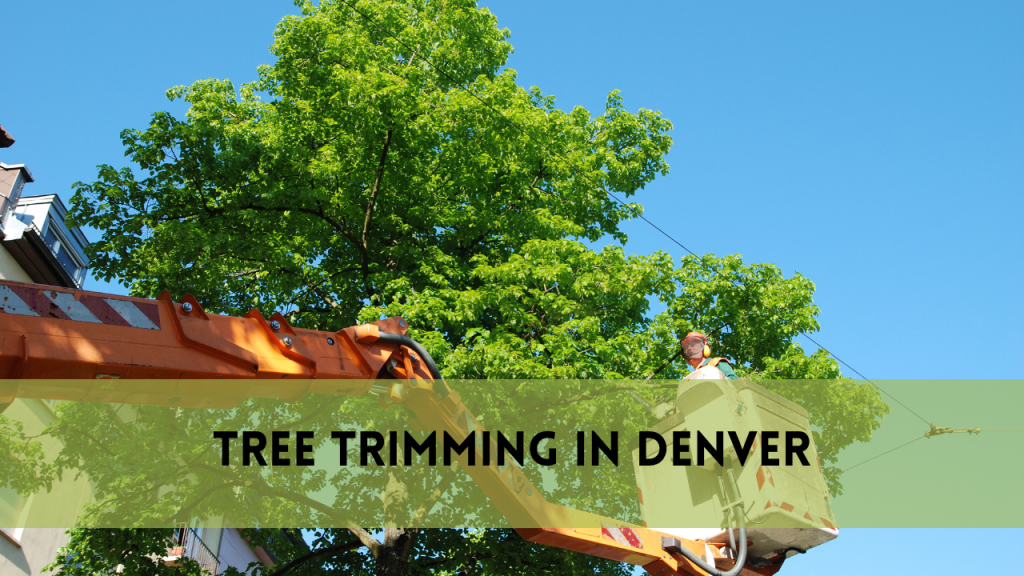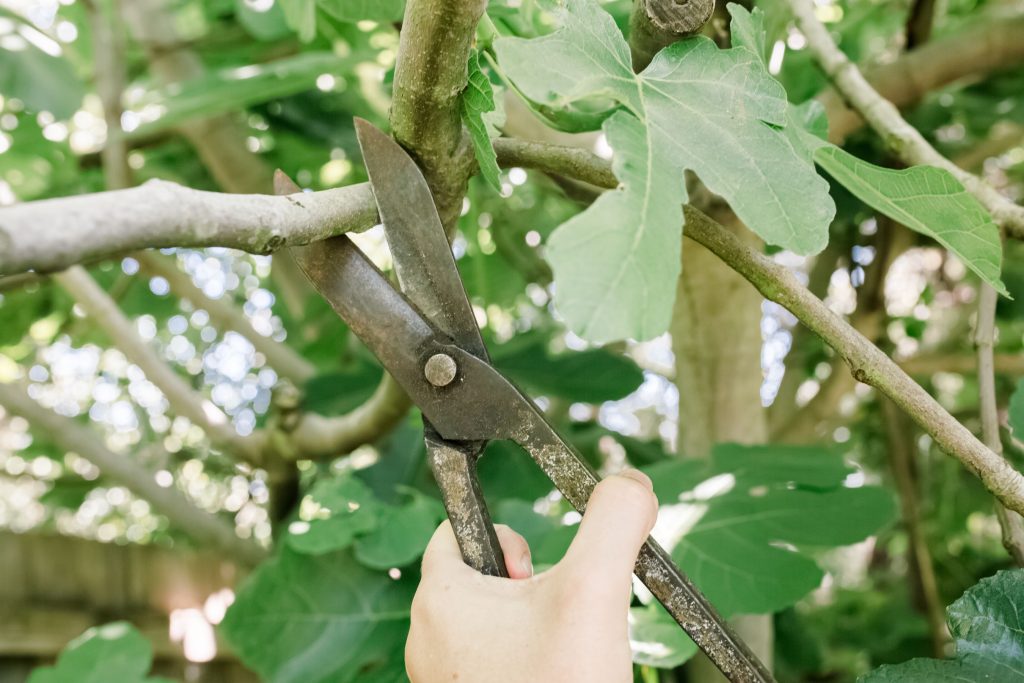How to Trim an Orange Tree?
In this complete aid, we will walk you through trim an orange tree the most common way of managing your orange tree bit by bit, guaranteeing that you have the information and certainty to really focus on this adored tree in your nursery
Orange trees that are routinely pruned will quite often create more natural products. By eliminating overabundance development and stuffed branches, you can divert the tree’s energy into delivering bigger and juicier oranges. Trimming works on the general well being of the tree by permitting better air course and daylight infiltration. This diminishes the gamble of sicknesses and nuisances, which can flourish in thick foliage. Pruning likewise permits you to shape your orange tree for stylish purposes. A very much kept up with, even the tree looks delightful as well as more straightforward to make due. Congested orange trees can turn into a wellbeing risk, particularly in the event that they are situated close to designs or walkways. Managing can kill possibly risky branches that could fall during tempests or high breezes.
Instruments and Materials For Tree Trimming
Before you start the most common way of managing your orange tree, assembling the right instruments and materials is fundamental. Having the fitting gear won’t just make the occupation simpler yet additionally guarantee your security and the prosperity of the tree. Here is a rundown of the fundamental instruments and materials you’ll require:
- Pruning Shears:
- Loppers:
- Hand Saw or Pruning Saw:
- Wellbeing Stuff:
- Gloves
- Security Goggles
- Ear Insurance
- Hard Cap
- Ladder:
- Pruning Sealant (Discretionary):
- Fertilizer Receptacle or Flotsam and jetsam Sacks:
- Sanitizer Arrangement:
- Emergency treatment Pack:
- Garden Truck or Push cart:
When to trim an orange tree
Timing is essential with regards to trimming an orange tree. Pruning brilliantly guarantees that you accomplish the ideal outcomes without hurting the tree’s wellbeing or organic product creation. The timing for trimming your orange tree relies upon a few variables:
Lethargic Season For Orange Tree Pruning
Pre-spring to Spring early: The ideal time for a significant pruning meeting on your orange tree is during the pre-spring to late-winter, regularly between late February and early Walk, before the tree begins its dynamic development stage. During this period, the tree is as yet lethargic, and seeing the tree’s design without leaves in the way is more straightforward.
Why Lethargic Season? Pruning during the lethargic season limits weight on the tree, as it isn’t consuming energy on development or natural product creation. It’s additionally doubtful to draw in bugs and illnesses during this time.
Upkeep Pruning:
Consistently: While significant pruning is best finished during the torpid season, upkeep pruning can be performed consistently. Upkeep pruning includes light managing to eliminate dead or sick branches, water sprouts, or other quick issues as they emerge.
After Reap: After the primary reap season, commonly in pre-spring or late-winter, you can perform support pruning to clean up the tree and eliminate any leftover natural product or dead branches.
Keep away from Outrageous Climate:
Trying not to prune during incredibly hot or cold periods is ideal. Outrageous intensity can pressure the tree, and chilly climate can dial back the mending system. Pick days with gentle temperatures for pruning.
Exceptional Contemplations:
Youthful Trees: Youthful orange trees require less pruning yet benefit from molding and primary pruning in their initial a very long time to lay out areas of strength for a.
More seasoned Trees: More seasoned trees might require revival pruning assuming that they’ve become congested or ineffective. This is a more concentrated pruning process that ought to likewise be finished during the lethargic season.
Infection or Irritation Issues: On the off chance that you notice illness or bug invasions on your orange tree, consider resolving these issues instantly. Now and again, it very well might be important to prune impacted regions no matter what the season.
Figuring out the Life structures of an Orange Tree
Trunk
The storage compartment is the fundamental stem of the tree, offering underlying help and moving supplements and water between the roots and the shade. While you by and large won’t prune the storage compartment, it’s fundamental to keep up with its respectability by staying away from harm.
Branches
Branches stretch out from the storage compartment and convey leaves, blossoms, and organic products. They can fluctuate in size and thickness, and each serves a particular job in the tree’s development and improvement.
Leaves
Leaves are the tree’s essential destinations for photosynthesis, where it changes over daylight into energy. Sound leaves are fundamental for the tree’s development and organic product creation.
Buds
Buds are little, lacking shoots that can create new branches, leaves, blossoms, or natural products. Buds assume an imperative part in the tree’s development and can be impacted by prune.
Flowers
Orange trees produce delightful white, fragrant blossoms, which in the end form into organic products. Pruning can influence the number and area of bloom buds, affecting natural product creation.
Fruit
Oranges are the valued result of your tree. Legitimate pruning can assist with guaranteeing that the tree’s energy is coordinated toward delivering great natural products.
Underground root growth
While not apparent over the ground, the root foundation secures the tree and retains supplements and water from the dirt. Keeping a solid root foundation is fundamental for generally speaking tree wellbeing.
Platform Branches
Platform branches are the super underlying parts of the tree. These branches structure the tree’s system and offer help for the shelter. Pruning platform branches can impact the tree’s shape and construction.
Water Fledglings and Suckers
Water sprouts are quickly developing vertical shoots that frequently fill in light of pruning or stress. Suckers are shoots that rise out of the tree’s base. These ought to by and large be pruned to keep a clean tree.
Security Safeguards to trim an orange tree
Wear Suitable Defensive Stuff
Gloves: Put resources into excellent planting gloves to shield your hands from thistles, sharp instruments, and rankles.
Security Goggles: Wear security goggles or defensive glasses to safeguard your eyes from garbage, particularly while utilizing pruning devices like saws or loppers.
Ear Insurance: Assuming you’re utilizing loud gear like trimming tools, think about wearing ear security to forestall hearing harm.
Hard Cap: Particularly for tall trees or while working close to utility lines, a hard cap can safeguard your head from falling branches.
Pick the Right Instruments
Guarantee that your pruning devices are in great working condition, sharp, and fitting for the gig. Dull or harmed devices can make the pruning system seriously testing and perilous.
Review the Tree and Region
Before you begin managing, cautiously investigate the tree for potential dangers like unsteady branches, above utility lines, or homes of stinging bugs. Eliminate any snags or perils from the workspace.
Utilize a Tough Stepping stool
In the event that you really want to utilize a stepping stool, ensure it’s in fantastic condition and situated on stable ground. Continuously keep in touch (two feet and one hand or two hands and one foot) while on the stepping stool.
Illuminate Somebody
Tell somebody that you’ll be chipping away at the tree. If there should be an occurrence of a crisis, it’s critical that somebody knows about your action and can help if necessary.
Practice Legitimate Cutting Strategies
While utilizing pruning shears, loppers, or saws, remove from yourself and keep a solid hold on the devices. Never cut branches that are above, as they can fall erratically.
Remain Hydrated and Enjoy Reprieves
Tree managing can be truly requesting work. Remain hydrated by drinking water and enjoy normal reprieves to forestall weariness.
Be Mindful of Falling Garbage
Pruned branches and leaves can fall unusually, so know about your environmental factors. Ensure there are no individuals or important things under the tree while you’re working.
Follow Safe Electrical Practices
Assuming you’re working close to electrical cables, don’t endeavor to manage branches that are contacting or near the lines. Contact your nearby service organization or an expert arborist for help.
Know Your Cutoff points
On the off chance that you’re not happy or experienced with utilizing specific devices or taking care of explicit pruning undertakings, consider employing an expert arborist who can securely manage your orange tree.
Bit by bit Manual for How to trim an orange tree
Surveying the Tree
Before you begin managing, carve out an opportunity to survey your orange tree. This step will assist you with distinguishing which branches need consideration and plan your pruning system really.
Examine for Dead or Unhealthy Branches:
Start by searching for any dead, sick, or harmed branches. These ought to be your first concern for expulsion, as they can hurt the tree and draw in bugs.
Check for Crossed Branches:
Search for branches that are crossing or scouring against one another. These can cause wounds that welcome illnesses and hinder sound development.
Recognize Water Fledglings and Suckers:
Find any water sprouts (quickly developing vertical shoots) and suckers (takes shots at the foundation of the tree). These ought to for the most part be pruned to keep a clean appearance.
Survey In general Tree Shape:
Think about the shape and construction of your orange tree. Choose if you have any desire to keep up with or work on its shape, going for the gold and open covering that permits daylight and air to enter.
Pruning Methods
Now that you’ve surveyed your tree, now is the ideal time to utilize the right pruning methods in light of the branches‘ qualities and your objectives for the tree.
Heading Pruning:
Heading pruning includes cutting the tip of a branch to empower bushier development. Utilize this procedure sparingly, predominantly for molding or diminishing the level of the tree.
Diminishing Pruning:
Diminishing pruning includes eliminating whole branches back to the fundamental trunk or a bigger platform branch. It further develops air flow and daylight infiltration, which is essential for organic product creation.
Restoration Pruning (For Congested Trees):
Restoration pruning is a more extraordinary method utilized on more seasoned or congested trees. It includes eliminating 33% of the tree’s limbs to invigorate new development and work on generally wellbeing.
Making the Cuts
While making cuts, it’s vital to do so accurately to advance recuperating and limit harm to the tree.
Cut at the Right Point:
Make clean cuts at a slight point simply over a bud or sidelong branch. This energizes new development in the ideal course.
Try not to Leave Stubs:
Try not to leave nails, as they can spoil and welcome illnesses. Slice as near the branch collar (the enlarged region where the branch meets the storage compartment or another branch) as conceivable without harming it.
Eliminating Ailing or Dead Branches
Utilize Sanitized Devices:
While eliminating unhealthy branches, make certain to clean your pruning devices between slices to forestall the spread of microorganisms.
Discard Sick Branches Appropriately:
Sack and discard sick branches in a manner that forestalls the spread of the illness. Try not to compost them.
Forming and Diminishing
Shape for Daylight and Wind stream:
Prune to shape the tree for ideal daylight openness and air dissemination. Eliminate swarmed or bungling branches to open up the shelter.
Meager Out Abundance Development:
Dainty out abundance development to diminish packing. This permits the tree to zero in its energy on less branches, bringing about bigger, juicer oranges.
Cleanup and Upkeep
Gather Pruned Branches and Flotsam and jetsam
Assemble every one of the branches and flotsam and jetsam that you pruned from the tree. Place them in an assigned manure canister, flotsam and jetsam sacks, or an assigned removal region. Appropriate removal forestalls the spread of infections and keeps your nursery clean.
Related Posts:
Pruning Sealant (Discretionary)
On the off chance that you made especially huge cuts or eliminated significant branches, think about utilizing a pruning sealant to cover the injuries. Pruning sealants can help safeguard against infection and nuisances. Apply it sparingly and as indicated by the maker’s directions.
Treat and Water
In the wake of pruning, your orange tree might profit from a fair manure application. Utilize a sluggish delivery compost intended for citrus trees and follow the suggested application rates. Water the tree completely in the wake of treating to assist the supplements with entering the dirt.
Screen for Nuisance and Illness Issues
Watch out for your orange tree soon after pruning. Search for indications of irritation perversions, sicknesses, or any surprising changes in the tree’s appearance. Early discovery takes into account brief treatment.
Mulch the Base
Apply a layer of natural mulch around the foundation of the tree. Mulch holds soil dampness, trim soil temperature, and lessens weed development. Guarantee the mulch is spread equally and doesn’t contact the tree trunk.
Routinely Investigate and Keep up with
Over time, keep on assessing your orange tree for any new development issues or pruning needs. Address any water fledglings, suckers, or ailing branches immediately.
Change Water system
Legitimate water system is critical for the wellbeing of your orange tree. Change your watering plan on a case by case basis to give reliable dampness to the root zone. Stay away from overwatering, as this can prompt root decay.
Pruning Recurrence
Ordinary pruning is fundamental to keeping up with your orange tree’s wellbeing and shape. While significant pruning is normally finished during the lethargic season, light support pruning might be important all through the year to resolve explicit issues.
Keep Records
Think about keeping a cultivating diary or notes regarding your pruning exercises. Record the date, the branches you pruned, and any issues or perceptions you made during the cycle. This can be important for future reference.
By following these cleanup and upkeep steps, you’ll uphold the recuperation of your orange tree in the wake of pruning and guarantee that it keeps on flourishing. Legitimate consideration and consideration will prompt better development, expanded organic product creation, and a more lovely and useful orange tree in your nursery.
FAQs
When is the best opportunity to trim my orange tree?
The best time for significant pruning is during the lethargic season, which commonly falls between pre-spring and late-winter (late February to Spring early). For support pruning, you can do it all through the year depending on the situation.
Could I at any point utilize ordinary nursery shears to manage my orange tree?
While garden shears can be utilized for exceptionally light pruning, it’s prescribed to utilize specific pruning shears, loppers, and saws intended for tree pruning. These devices give cleaner cuts and are more qualified for the assignment.
What amount would it be a good idea for me to prune my orange tree?
Try not to eliminate more than 33% of the tree’s shelter during a solitary pruning meeting, with the exception of restoration pruning on more seasoned trees. Over-pruning can pressure the tree.
Do I have to utilize a pruning sealant on the cut branches?
Utilizing a pruning sealant is discretionary and regularly held for huge cuts or wounds. It can help safeguard against sickness and bugs. Apply it sparingly and as indicated by the maker’s directions.
Could I at any point compost the pruned branches and leaves from my orange tree?
Fertilizing the soil pruned branches and leaves from a sound orange tree is by and large protected. In any case, try not to compost sock material. Appropriate treatment of the soil will assist you with reusing natural matter while improving your nursery soil.
Conclusion
In conclusion, mastering the art of trimming an orange tree is essential for both avid gardeners and citrus enthusiasts. Proper pruning, performed during the dormant season for major adjustments and regularly for maintenance, not only enhances the tree’s health and appearance but also boosts fruit production, yielding delicious oranges. Safety is paramount, so always wear appropriate protective gear, use sharp tools, and adhere to safety guidelines to prevent accidents.




